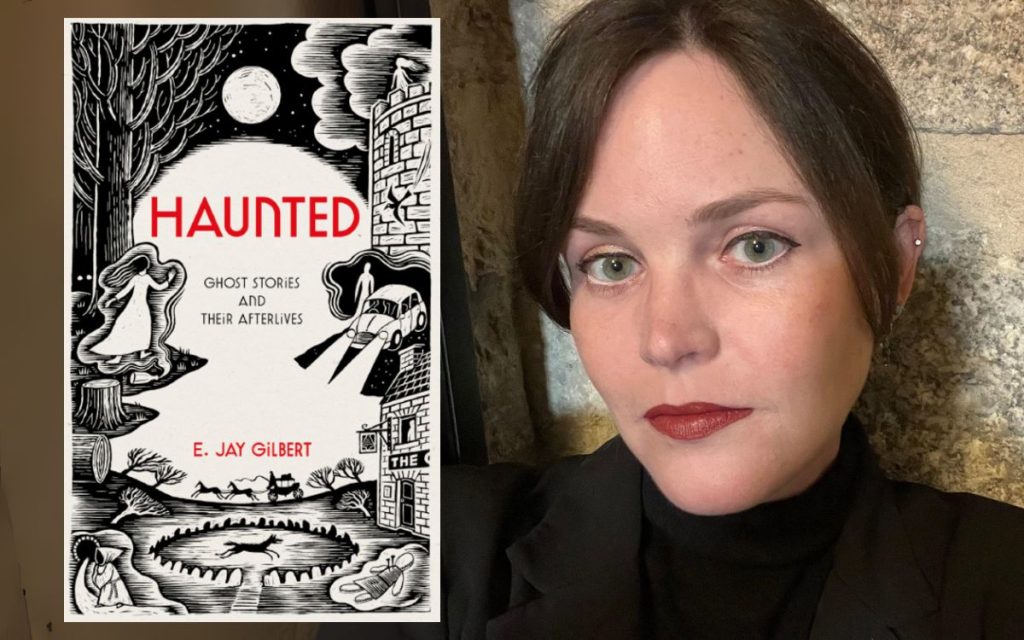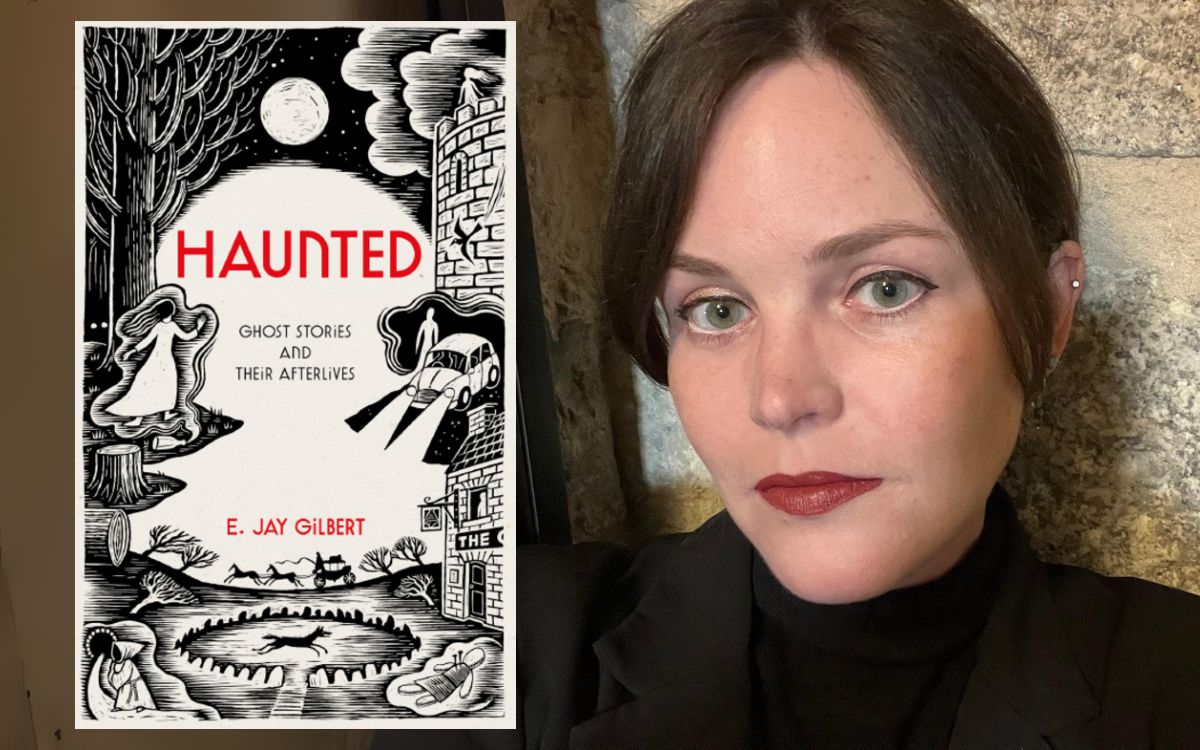Dr E. Jay Gilbert tells Spooky Isles how studying language helped her trace the voices behind Britain’s ghosts in Haunted: Ghost Stories and Their Afterlives
When Dr E. Jay Gilbert set out to write Haunted: Ghost Stories and Their Afterlives, she aimed to do more than collect eerie tales.
Her book explores what ghost stories reveal about the people and places that tell them — and why similar figures appear across the British Isles.
“I’m from the North East of England, from a part of the world where there’s a very widespread, pragmatic belief in ghosts,” she says. “I’ve heard stories from bus drivers and coal miners — very down-to-earth people who worked in power stations. Where I lived, there was always a sense of a local ghost that everyone knew.”

From dialects to the dead
Now based in Oxford, Jay is a writer, academic and researcher. She has an MA and MSt from the University of Oxford, a PhD from the University of Leicester, and lectures in Applied Linguistics at The Open University.
She also co-edits The Banshee, a women’s literary journal with a particular focus on the supernatural.
Her academic background in sociolinguistics and dialectology shaped her approach to folklore.
“Everyone knows the idea that Eskimos have lots of words for snow. In the North East, we have nuanced words for walking through water. Plodge is an Anglo-Saxon word that means pulling your feet out of mud as you walk. It struck me that ghost stories work in the same way. People experience the same things, but how they describe them depends on where they are and when they live.”
She points to a recurring example: mysterious green lights underground.
“In the medieval period, people thought it was fairies. Early miners called it a knocker — a goblin-like figure warning of collapses. Today, people might say it’s aliens. Scientifically it’s probably gas, but what’s fascinating is how the interpretation changes with culture.”
The ghosts we all know
In Haunted, Jay divides the stories she collected into six key categories:
- House Guests: “Private, like house guests, I call them — ghosts who haunt just a person’s house and which people might never have heard about if they hadn’t been asked.”
- White Ladies: “Under this heading I also include brown ladies and grey ladies — usually maiden-like figures who haunt castles and places like that.”
- Witches: “In Hertfordshire, where there was a lot of witch hanging and burning, the stories are much darker. In other places, people thought of witches as protective — they might put a shoe up a chimney to keep them away, but also to draw on their power to protect the household.”
- Ghosts Underground: “Other examples would be like literally the Underground in London. Lots of people see ghosts there.”
- Reputation Hauntings: “Some buildings are almost haunted by their reputation. Whether there’s really a ghost or not, it still has a physical effect — the house price drops, it becomes impossible to sell.”
- Public Hauntings: “This is things like hospitals and pubs. A lot of people in the nursing profession are very superstitious. I read memoirs and journal articles by nurses saying it was fundamental to their work that everyone believed in ghosts, because they felt there was always somebody protecting them and stopping them from doing something really bad.”
Experience and belief
Since publishing Haunted, Jay has continued gathering stories wherever she goes. She even spent a night in Bodmin Jail.
“The hotel is the prison, so you sleep in a cell. In the middle of the night I became convinced someone was looking at me. Then I thought I heard footsteps. Probably just suggestion, but I was so creeped out I had the television on all night.”
Belief in ghosts, she says, was part of her upbringing.
“Where I grew up, I couldn’t not believe. My granddad and uncle were pragmatic, working-class Northern men — they just wouldn’t have made it up.”
She tends to think of ghosts as echoes.
“I don’t subscribe to the stone tape theory as such, but I think most ghosts are recordings, the echo of something inscribed on a place. I’m not sure about interactive ghosts, but many of the stories I collected suggested some level of interactivity.”
One recurring motif particularly intrigued her: the black dog, known in the North East as a barghest.
“Every region has its own version — a grim, a barghest, a town ghost — and it appears everywhere. I also collected modern stories where people said they were haunted by their pets. The most common was someone saying, ‘My cat died, but I saw him or felt him on my bed.’ Those are the most benign hauntings — people are happy to experience them.”
Ghost stories and us
When asked if there will be a sequel, Jay laughs.
“When I was recording the audiobook, the producer came up with a new ghost story every day. I could have written Haunted 2 just from him! But the book isn’t only a collection of stories — it’s also analysis of what they mean and why they matter. For now, I’m working on a spooky novel.”
With Haunted: Ghost Stories and Their Afterlives, Jay brings together folklore, history and lived experience to show how ghosts are more than just tales of the dead.
They are reflections of the living, shaped by the culture and communities that keep telling their stories.
Haunted: Ghost Stories and Their Afterlives is available now on Amazon and wherever books are sold.
Have you experienced a ghost story in your hometown? Share your tale in the comments below!


